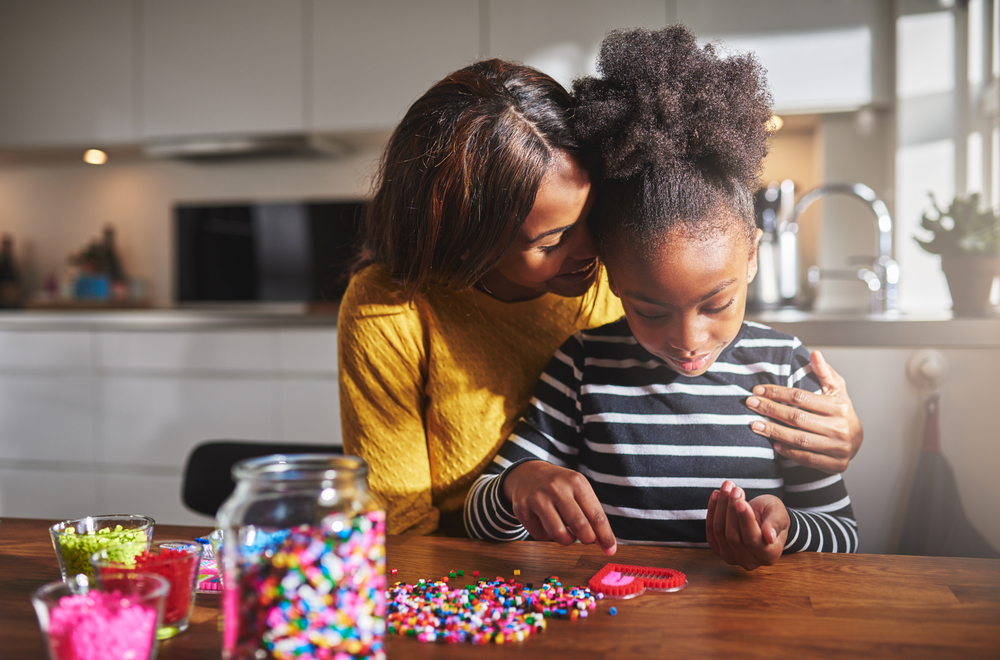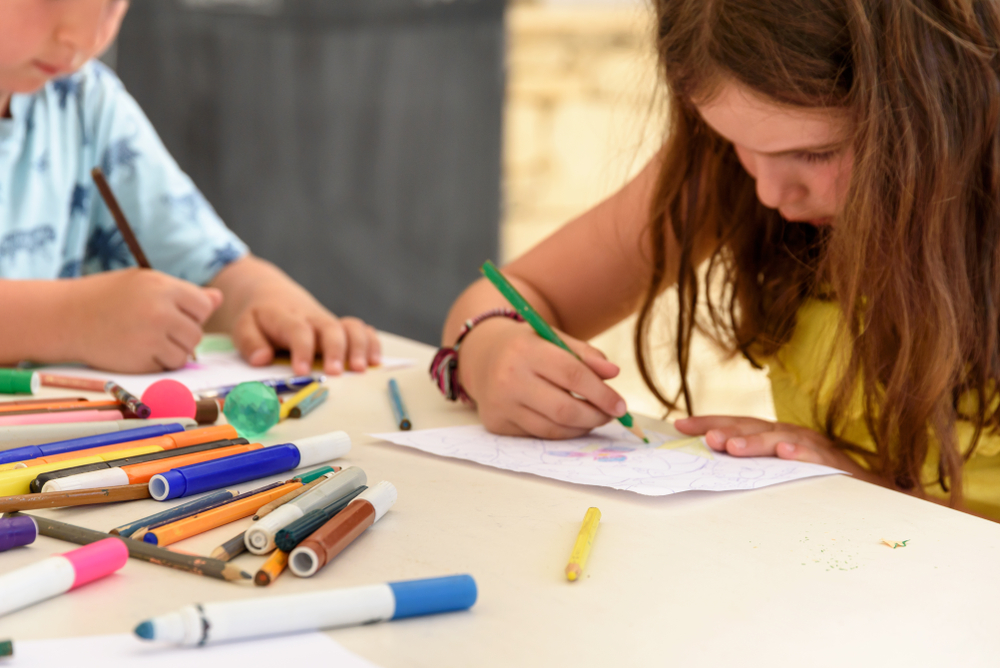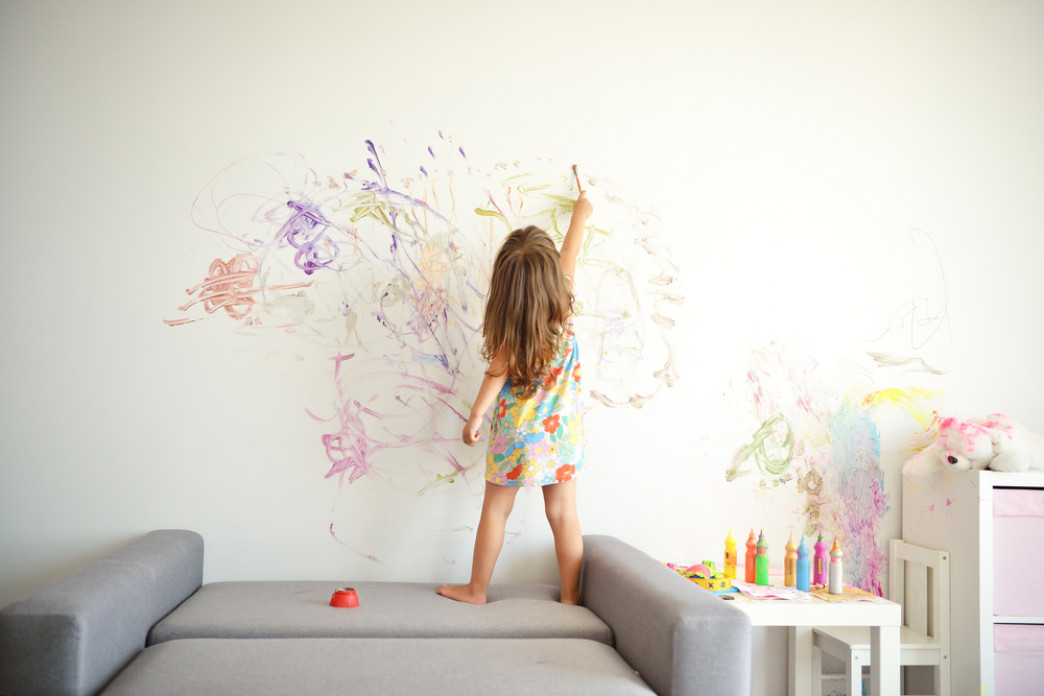Using Projects and Games to Help Children with Grief
We all know that grieving is tough for adults, but coping with loss can be even more difficult and confusing for children. In this article, we’re sharing some creative activities that may help a child during their grieving process. Wherever possible (and always if the kids are younger), we recommend a parent-child approach when trying these grief projects. We hope they’ll provide inspiration and comfort, as well as help encourage conversations and connection along the way.
Heartbreak Pot
After a loss, it can feel to a child like their world has been shattered. This grief activity is a physical representation of that emotional injury, but with a positive and affirming result. This project can be done either alone (for older children and adults) or with friends and family.
What You’ll Need:
A terra cotta pot, paint pens (or markers or paint), glue, and safety goggles.
Project How-To:
- Wearing safety goggles (and gloves if desired), break the terra cotta pot. To avoid shattering, cover it with a damp towel and tap it from the outside with a small hammer.
- Divide the broken pieces among those participating.
- On the inside of the broken pieces, write words or paint images that are symbolic of the grief, sadness, anger or other emotions you’re feeling.
- On the outside of the pieces, write words or draw images that represent support and comfort. Those could be the names of people you love, or other things in your life that help you cope with your grief (art, yoga, reading, prayer, etc.).
- Use the glue to reassemble the pot piece by piece, and let it dry for at least 24 hours before moving it.
In the weeks and months ahead you can look at the pot, now joined back together as a symbol of your experience, and be reminded that while you may feel damaged by loss, you are surrounded by support, and you too can be brought back together in a new way.

Meaningful Beading
Many know and tout the anxiety-reducing benefits of beading. It’s easy, stress-relieving and meditative, and even children can do it. Any type of beading is great, but this specific activity may help you start conversations with children about grief.
What You’ll Need:
String or elastics, a variety of beads as simple or elaborate as you’d like and accessories needed for beading.
Project How-To:
- Gather your beads and organize them on plates or in bowls or boxes for easy access during the project.
- Have children pick beads for the bracelet (or necklace or keychain) that relate to their memories of the person who has died. For example, a bead for their loved one’s favorite color and the color of their favorite sports team.
- As you string each bead, talk about the colors and shapes and why they chose them.
- Next, get more creative and add beads with colors that represent things such as their their birth month or their favorite holiday. Then include beads that evoke their happiest memory of the person they've lost, their personality, etc.
In the end, you’ll not only have a meaningfully personalized keepsake that the child can wear or keep close to remind them of a loved one. You’ll also have shared stories and memories with them that may help in their healing.
Remembrance Ball/Ornament
These are ideal to make around the holidays as they can be hung as ornaments on a tree or around the house. If you’d rather just make a plain plastic ball to keep on display, that’s an option too. The idea is to fill a clear plastic ball with ribbon in a variety of colors, each symbolic of an emotion. Participants can feel free to add sparkles, beads or any items.
What You’ll Need:
Start with clear plastic ornament balls. Then choose items to decorate the balls, such as multiple colors of ribbons, glitter, sparkles, beads, paint pens, stickers--anything you like.
Project How-To:
- Gather all your supplies.
- Cut the ribbon into small strips (about 4-6 inches).
- Assign each ribbon an emotion (happy, sad, scared, lonely, tired, overwhelmed etc.) and then place them on the table in organized piles or on labeled paper plates. Any other items can be placed on the table and labeled “Memories,” for example.
- Assemble! Let the kids know that each string represents an emotion. Encourage them to fill their ball with as many feelings as they have. Ask gentle questions as they’re adding the emotions and memories to the ball in the form of ribbons and other details.
- Give them the option to decorate with stickers or words on the outside balls.
- Display wherever the child prefers.
This activity was inspired by one we read about on What’s Your Grief. We love that after completing this activity you will have a one-of-a-kind, meaningful ornament that can be taken out each holiday season or placed on a bookshelf or nightstand to offer close comfort.
Scream Box
Giving kids permission (and a safe, even secret place) to scream can be surprisingly appealing to them. This clever box will muffle the sound so those who feel the desire to scream can do so without rattling everyone’s nerves.
What You’ll Need:
This wonderful activity is easily made with things you’ll likely have around the house. First, find an empty box. Any empty box with a top will do, such as a cereal or cookie box. Gather old newspapers, a box of tissues, plus a paper towel tube, tape, and items to decorate the outside of the box, such as colorful paper, markers and stickers.
Project How-To:
- Fill the box with crumpled up newspaper. Close the top of the box.
- Mark a circle on the top of the box using one end of the paper towel tube. Then cut out the hole following the circle. Make sure the hole is big enough to insert the paper towel tube.
- Place the paper towel tube into the hole in the box, leaving half of it sticking out of the box top. Tape the tube in place (half in/half out).
- Stuff the tube halfway with tissues.
- If you like, wrap the box and the tube with colorful paper. Keep decorating! Use markers, stickers, or anything you want to personalize the box.
- When you’re ready, tell your young one to SCREAM into the box as loud and as often as you would like. (Or scream into it yourself if you prefer!)
This box will actually muffle screams. If, however, you’d prefer to purchase a scream-focused gift to make someone who’s grieving smile, we suggest this pillow. And if you don’t feel like building a scream box, you can simply visit this genius website created by TV host John Oliver. It lets you type your lament into “The Void,” where it satisfyingly shrinks and vanishes. Bonus: there’s no limit to how many screams you can send into The Void.

Simple Coloring and Drawing for Grief
Many therapists and grief experts will preach about the power of coloring and drawing to help kids with grief. As basic as it sounds, handmade pictures can be expressions of a child’s thoughts (even when they lack the words to describe their feelings.) Coloring or just free drawing may help calm a child, and can offer a loving adult a window onto their young one’s emotional landscape.
What You’ll Need:
Markers, crayons, or colored pencils, and paper. If you’d like to find pictures for your kids to color, we suggest downloading images like these.
Project How-To:
Let the kids go for it, in a more or less structured way--whatever suits the moment and the mood. They can doodle, color pictures, or draw their thoughts (either literally or abstractly.) You can assign emotions to particular hues, or create a theme such as, “How I’m feeling right now” or “How much I love Pop-Pop.”
It might be worth saving these images, and if you can repeat this activity numerous times, you may want to show the children how their work--and maybe even their feelings--have changed over time. Also, if you’re looking for a gift and something to inspire your child and uplift them in their grief, we suggest a complete art case.
The Talking, Feeling, & Doing Grief Card Game
This is a game designed specifically for one or two adults to play with children in an attempt to get them to open up about their feelings. Cards prompt topics and kids are encouraged to share their emotions. Adults can then gently address worries, fears or sadness to help kids process grief.
What You’ll Need:
You can purchase the grief card game here.
Project How-To:
Children ages 6-12 will select a card. The idea is to answer emotional prompts on the cards and start a conversation.
Hopefully, this game will spark thoughtful replies and interesting stories. Just be mindful that unexpected emotions may arise, and that’s OK. Our best advice: stay open and supportive, and if you hit a wall where someone doesn’t feel like talking, don’t push too hard.
Worry Beads (Komboloi)
Worry beads were traditionally used by the Greeks and are still used by other cultures for meditation, prayer and reflection. But for a grieving child, they can also provide a necessary distraction in a time of stress or emotional anxiety. The idea is to make a loop of beads to hold in your hand. The child turns the beads individually, using their shape and texture as a tactile comfort for nervous energy, or repeating a simple phrase or message such as “God bless Grandma,” or “I’m OK today,” (or whatever the child needs right now). Making worry beads is easy enough, even for kids, and the activity alone can be cathartic.
What You’ll Need:
Beads that have a nice feel to them and a hole big enough to string a cord through. Since this activity is about feeling, moving and handling the beads, you’ll also need a strong cord on which to string them.
Project How-To:
- Cut the cord to be about five hand widths (wrap it around your palm 2 ½ times).
- String the beads on your chosen cord. Traditionally, the beads are a multiple of 4 plus 1 (i.e. 17, 21, 25 etc.) the one piece will be used at the end as a “shield” bead. (Note: this one will need to fit two pieces of the cord through it.) You can also add two beads at the end for decoration.
- Loosely knot one end and string the beads.
- Once all the beads are strung, unknot the cord. Slide the shield bead on and bring the cords together to make sure the ends are even. Knot below the shield bead. If you’d like, you can tie a bead at the end of each of the sides of the cords.
- You now have a handmade set of beads and can use them to meditate, fiddle, or just relax.
If you like the idea of worry beads, but the actual beading isn’t your thing and you’d rather just purchase a premade loop, you can find them on Etsy or Amazon.
Hunting for Worry Worms
Here, the idea is to help younger children to open up about their fears. Deep conversations can seem more like a game as little ones are distracted by searching for and decorating paper worms.
What You’ll Need:
Paper to cut out the worry worms. Here’s a template provided by A Warm Place. You’ll also need scissors and markers.
Project How-To:
- Cut out paper worms, whether free form or by using a template.
- Hide the worms around the room, out of sight of the kids.
- When a child finds a worm, ask them to bring it back to the table where the markers are. Seated there together, let them know that this worm is there to hear their worries or stories. Ask them to tell you how they’re feeling or prompt them to pick up a marker and write or draw their feelings.
- The worry worms can be colored, written on, held or used in any way as a vehicle for communicating about grief, loss and the related emotions. Parents or counselors can answer questions and offer comfort to help a child through their grieving process.
Reading Room: Children’s Books about Death and Grief
Helping a Grieving Child While You’re Grieving Too
As an adult who may be grieving yourself, it can be difficult to watch your child dealing with loss, so make sure to take care of yourself. When it comes to helping your kids deal with grief, try one or more of these activities, and know that each grief journey is different, even for kids.
Do note that the activities listed above are created for a range of children’s ages (and adults may find them helpful as well). Of course, we want to keep everyone safe, so please keep an eye on young children and small objects, such as beads and sharp scissors, etc. Different projects may be suitable for your child based on their age and their personal development.
Our Farewelling Editors are constantly reviewing and curating resources to help you with your planning. We may receive a small commission from any purchases made through the links.


-banner.png)





